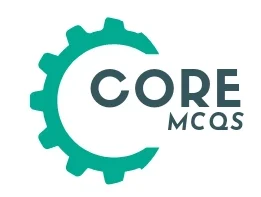Biology Chapter 5 Entry test MCQs
26. Which of the following describes the comprehensive pathway of reflex arc?
a. Prick on finger–Sensory nerve–Cerebrum–Motor nerve–Finger muscle
b. Prick on finger–Sensory nerve–Medulla–Motor nerve–Arm Muscle
c. Prick on finger–Sensory nerve–Cerebellum–Motor nerve–Finger muscle
d. Prick on finger–Sensory nerve–Spinal cord–Motor nerve–Finger muscles
27. The reflex action is the phenomena which only involves:
a. Receptors, effectors and spinal cord
b. Brain, receptors, spinal cord
c. Receptors and effectors
d. Receptors, neurons, brain
Nerve Impulse
28. Depolarization is the result of:
a. Efflux of K+
b. Influx of K+
c. Efflux of Na+
d. Influx of Na+
29. Which of the following causes the hyperpolarization across neurolemma?
a. Late closing of K+ channels
b. Distribution of charge
c. Outward diffusion of Na+
d. Influx of Na+
30. Which one of the following sets of ions is necessary for transmission of nerve impulse?
a. Ca2+ and K+
b. Na+and K+
c. Na+ and Mg2+
d. Ca2+ and Na+
31. Which of the following will restore original ion gradients and RMP after hyperpolarization in neurons?
a. Na+ channels
b. K+ channels
c. Ca++ channels
d. Na+/K+ pumps
32. Conduction of action potentials from one node of Ranvier to another in myelinated neurons is through:
a. Resting Membrane Potential
b. Hyperpolarization
c. Saltatory Conduction
d. Depolarization
33. In the following diagram of action potential in a neuron, ‘x’ depicts:
a. Polarization
b. Depolarization
c. Hyperpolarization
d. Repolarization
34. How many sodium ions are pumped out in response to two potassium ions transported into the membrane?
a. 2
b. 4
c. 3
d. 1
35. Depolarization of neuron is characterized by:
a. Na+ and K+ within the axons toward the axon terminal
b. Na+ into the axon and K+ out of the axon
c. K+ into the axon and Na+ out of the axon
d. None of these
36. In an action potential, the permeability of sodium ions in the neuron increases due to:
a. The opening of sodium channels/gates
b. Repolarization
c. Sodium ions forming an ionic bonding
d. The action of the acetylcholinesterase enzyme
37. If stimulation is above…………..impulses travel to the brain along the sensory neuron.
a. Threshold
b. Action Potential
c. Recovery Period
d. Resting Potential
Synapse
40. Microscopic gap between the neurons is called:
a. Collapse
b. Synapse
c. Pre-synapse membrane
d. Synaptic cleft
41. Which ion is involved in release of Acetylcholine from pre-synaptic fiber into extracellular fluid?
a. Sodium
b. Calcium
c. Magnesium
d. Potassium
42. Neurotransmitter molecule binds to receptors that are located on:
a. Post synaptic membrane
b. Synaptic knob
c. Synaptic cleft
d. Pre-synaptic membrane
43. After the depolarization of post synaptic neurolemma, neurotransmitters are mostly:
a. Degraded by enzymes
b. Taken up by Schwann cells
c. Taken up by post synaptic membrane
d. Remain in synaptic cleft
44. Neurotransmitter secreted at synapse outside the central nervous system is:
a. Polypeptide
b. Dopamine
c. Acetylcholine
d. Androgen
45. For the impulse to transfer from presynaptic to post synaptic neuron, the substance required is:
a. Protein
b. Sodium
c. Calcium
d. Potassium
46. The nerve impulse which jumps from node to node in myelinated neurons is called as:
a. Saltatory nerve impulse
b. Resting membrane potential
c. Initial nerve impulse
d. Threshold stimulus
47. When a nerve impulse jumps from one node of Ranvier to the next in a myelinated neuron, it is called————.
a. Synapses
b. Saltatory conduction
c. Membrane potential
d. Resting potential
48. In nervous system, chemical messengers are called————–.
a. Neurotransmitters
b. Enzymes
c. Hormones
d. Chemoreceptors
49. Acetylcholine and nor-adrenalin are two types of————-used in our nervous system.
a. Enzymes
b. Hormones
c. Neurotransmitters
d. Channel and carrier proteins in the cell membrane of a neuron
50. The main neurotransmitter for synapses is———–which lie outside the CNS.
a. Acetylcholine
b. Choline
c. Phosphatidylcholine
d. Acetaldehyde
